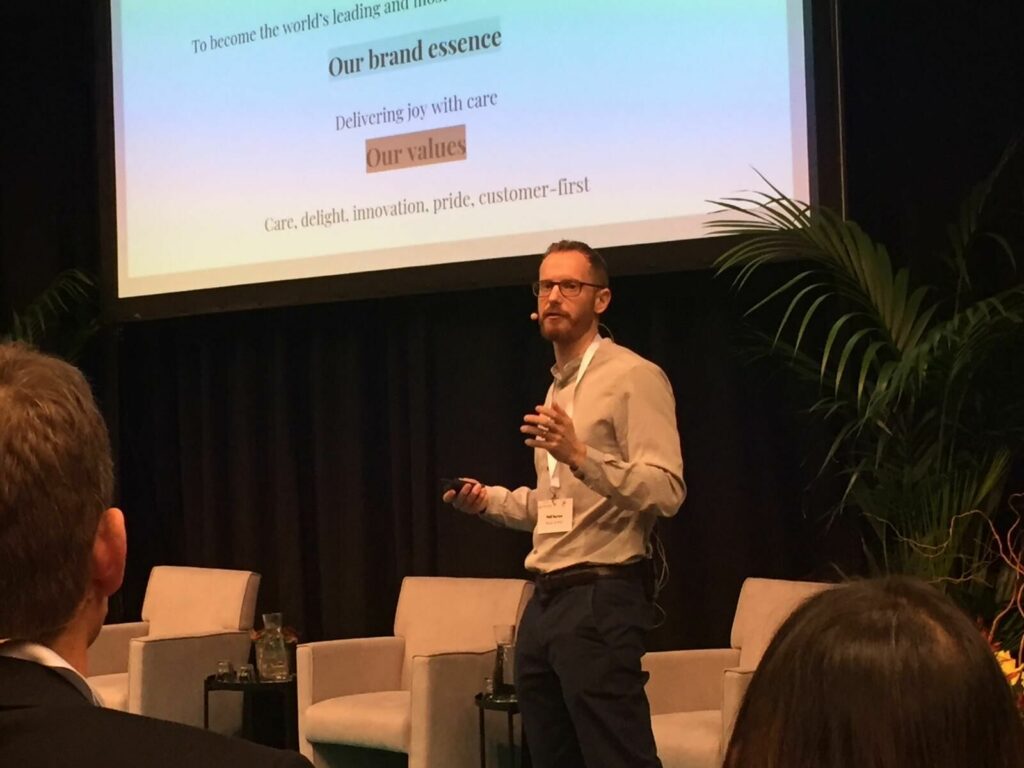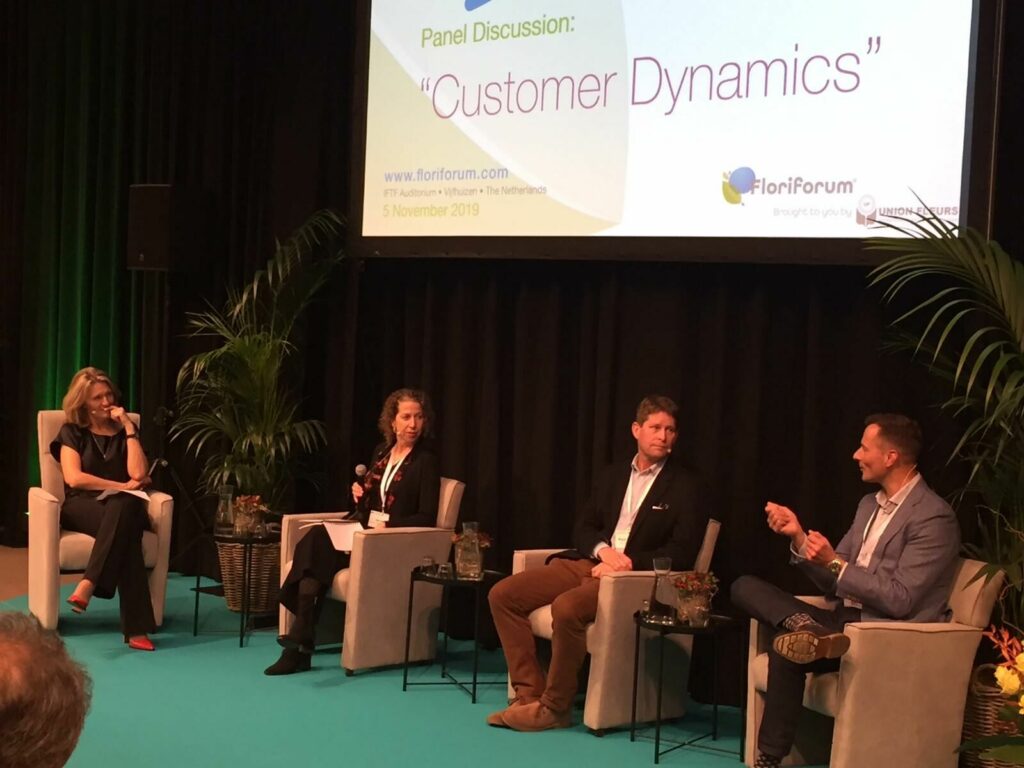“If we can make a profit, we will, but it isn’t our main objective. We’re more interested in growth and gaining market share”, said Phill Burton. The COO of English company Bloom & Wild, online seller of boxed flowers, was one of the Floriforum speakers in Vijfhuizen.
It didn’t take one of the audience members long to make the calculations. Bloom & Wild received 22 million pounds from investors, who are undoubtedly looking for a decent return on their investment. Assuming Bloom & Wild sell 1.9 million boxes of flowers per year, they need to add a margin of more than one pound per bouquet to make it work.
The calculation wasn’t entirely correct according to Burton and he added that making a profit isn’t the company’s main objective. Growth and increasing their market share are what they’re currently focusing on. That’s why they’re spending a lot of money on large advertising campaigns on TV and in other places.

Welcome to the world of online sales. There aren’t too many online shops that manage to make a profit and Bloom & Wild, which has been active for 7 years now, is no exception. However, there isn’t a single sector, including the floricultural industry, that can avoid the phenomenon of e-commerce. According to Burton, Bloom & Wild is the second largest online flower seller in the United Kingdom by now after leader Interflora. The latter is more of a hybrid model though, with florists selling part of their assortment online via Interflora.
1.9 million bouquets
Bloom & Wild doesn’t have any physical shops. The company has a head office in London, from where they manage their activities in the UK (1.7 million bouquets), Ireland, Germany and France (200,000 bouquets all together). Their employees work on branding, technology and operations. Everything else, including the cultivation, sourcing and delivery of the flowers, is outsourced. A small percentage of the bouquets is delivered to the customers by Bloom & Wild themselves.
The company spends a lot of time and effort on data collection. Data derived from their customers, regarding consumer satisfaction and delivery, for example. All consumer feedback is analysed and used to improve their performance. But who exactly are their customers? 85 to 90% are women in age category 30-50, who buy flowers for their sisters or best friends. Customers used to buy via an alternative sales channel or didn’t use to buy any flowers at all. Some are buying more flowers now.
Through the leterbox
Interestingly, Bloom & Wild supply their flowers in boxes that fit through the letterbox. They offer two different sizes: for letterboxes with a height of 3.5 cm and for those with a height of 3.8 cm. Customers create their own bouquets. Are consumers really looking for something like this? “In our experience, they love it. More even, than we thought they would.” Surprisingly, German consumers love it too, despite the fact that many Germans don’t have a letterbox.

Bloom & Wild is one example of the increasing number of online flower sellers across the globe. Kate Penn, CEO of the Society of American Florists, voiced her opposition against the alleged disruptive effect of online sales channels. In the United States, the physical florist is still very much alive. “People want direct interaction with the product and with someone on the shop floor. That experience is still very important. There’s a reason why Amazon has started to open physical shops. Brick and mortar stores still have something to add.”
The theme of this year’s Floriforum was Customer Dynamics. Martin de Munnik of Neurensics and Dennis van der Lubbe of the Flower Council of Holland spoke about neuromarketing. More about this later.









